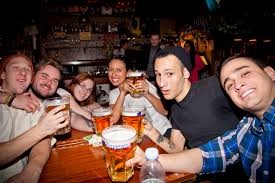 John Brown--Interesting Connections
John Brown--Interesting Connections
I am so immersed in the Civil War that every once in a while I have to write about it! Right now I am doing research on Judge Richard Parker, who was the judge at John Brown's trial.Quick Historical Recap: On October 16, 1859, John Brown with a force of about 20 men seized the federal arsenal at Harper's Ferry, VA; took several hostages with their slaves into the fire-engine house of the arsenal; and killed several people in their attempt to start a slave insurrection.
Interesting Connections
Yes, Harper's Ferry was in Virginia. West Virginia became a separate state in June 20, 1863 during the Civil War.
The first man killed by Brown's men was a free black man, Heyward Shepherd, the railroad station baggage handler. Shepherd lived in Winchester with his wife and eight children. According the Shenandoah Valley Battlefield's website: "News of Shepherd’s death at the hands of John Brown’s raiders infuriated many of Winchester’s townspeople. The town’s inhabitants organized a special relief fund for the care of Shepherd’s family. Militia troops and citizens of Winchester accompanied Shepherd’s body to its final resting place in the colored cemetery on the outskirts of Winchester."
 |
| Lee in the early 1850s |

Judge Richard Parker lived in Winchester and Clarke County. He rode the judicial circuit that included Jefferson County, Virginia. The circuit court opened October 20, 1859, in Charlestown, the county seat, which is where Brown and his men were tried with Parker presiding.
Parker inherited the Retreat at Cool Spring in Clarke County from his father Richard E. Parker. Although the building the Retreat is privately owned, Shenandoah University now owns the adjacent River Campus at Cool Spring where the university preserves the Civil War heritage of the campus and has trails open to the public as well as being a living classroom for SU students.
Parker's wife, Evelina T. Moss Parker, inherited a house at 307 Washington Street that was built by Judge Hugh Holmes sometime in the 1790s. The house occupied an entire block, bounded by Washington, Stewart, Clifford, and Cecil streets. It was demolished sometime in the 1920s. Parker told a reporter that the house was built from designs from Thomas Jefferson and was a twin to one in Staunton built by Archibald Stuart, whose wife was the sister of Hugh Holmes (Eleanor and Elizabeth Briscoe, respectively). The description of the Holmes house is very similar to that of the Stuart house that is still standing. However, the experts say the house does not resemble any work by Jefferson and was not built from his plans.
Brown's trial began October 27, 1859. He was found guilty on October 31, sentenced on November 2, and hung Dec. 2. Parker was criticized for rushing the trial, but also for allowing a month to elapse between sentencing and hanging. He states that he did not want Virginia justice to be criticized, but also there were fears that individuals from the North might come to try to free Brown and continue his insurrection.
Modern day historians feel that Parker gave Brown more latitude to speak during the trial than was legally necessary. Brown's impassioned speeches in the courtroom and his letters and interviews with the press during the time between sentencing and execution greatly contributed to a change in attitude among many Northerners. They no longer saw him as a fanatic criminal but as a martyr. Brown told his supporters, "I am worth inconceivably more to hang than for any other purpose," and his spent the last month making certain of his legacy.
The 1st Virginia Regiment, from Richmond, was among the troops sent to maintain peace at Brown's execution. One temporary member of the regiment who witnessed the hanging was future Lincoln assassin, John Wilkes Booth. The 1860 photo of Booth to the left is from the Library of Congress: http://hdl.loc.gov/loc.pnp/pp.print
As he was being led from his cell to the gallows, Brown handed a note to his jailer, "I John Brown am now quite certain that the crimes of this guilty land would never purged away; but with Blood. I had as I now think, vainly flattered myself that without very much bloodshed; it might be done."






 calories!
calories! 
 Swanson came up with the idea when the company found they could purchase surplus frozen turkeys at a good price. The retail cost was 98 cents.
Swanson came up with the idea when the company found they could purchase surplus frozen turkeys at a good price. The retail cost was 98 cents.

 Pundits think perhaps it is because there is no high priced New Year’s Eve cover charge and that many college aged folks want to meet up with their old friends when they come home for the holiday.
Pundits think perhaps it is because there is no high priced New Year’s Eve cover charge and that many college aged folks want to meet up with their old friends when they come home for the holiday. 

















